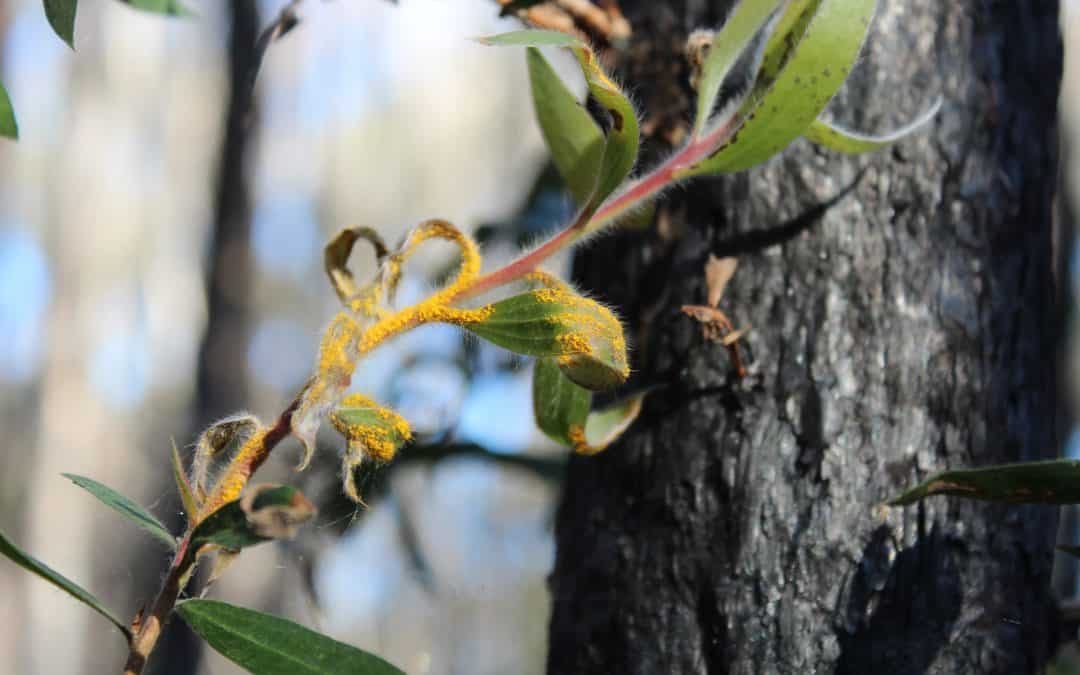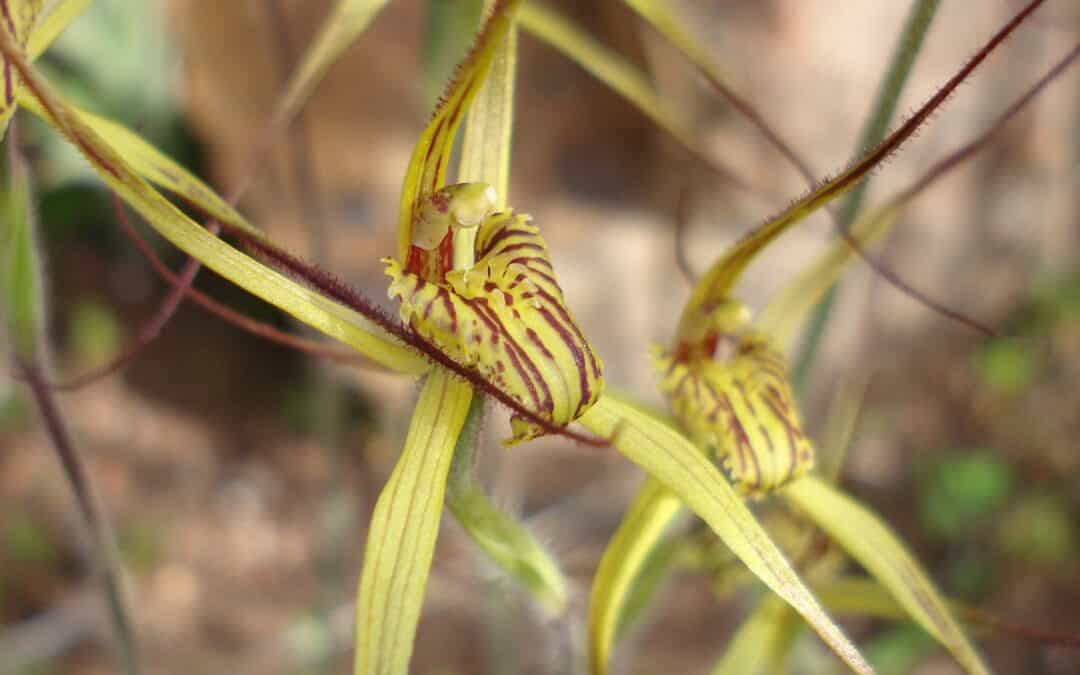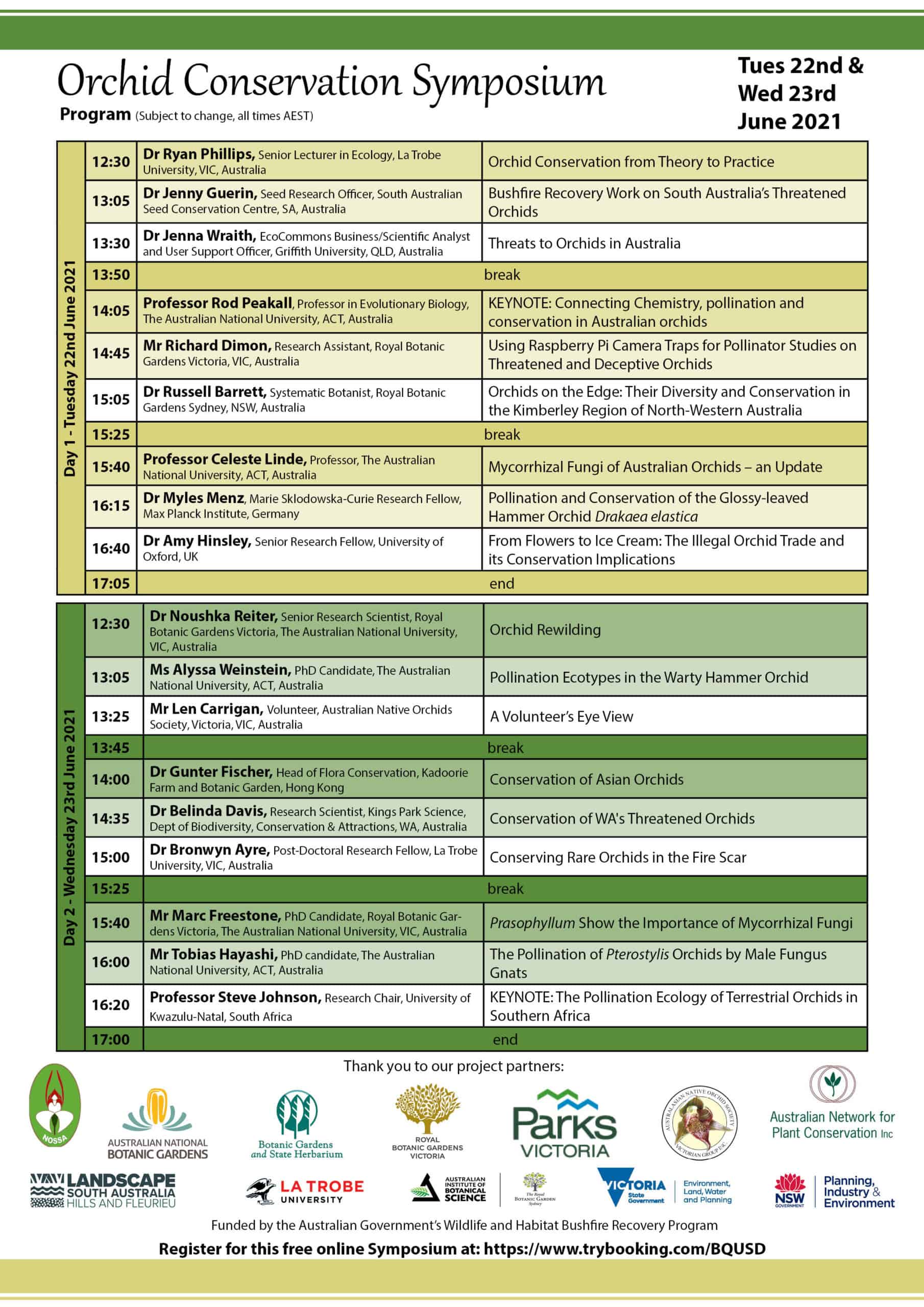
Myrtle Rust – national Statement of Concern now open for signatures
A national meeting of more than 200 scientists and government, industry and community representatives has issued a Statement of Concern on Myrtle Rust, with a call for individuals and organisations to add their signatures. The Statement is directed to all Australian governments, and calls on them to endorse and fund a national action plan for this introduced plant disease.
In late March more than 200 scientists and government, industry and community representatives met in Ballina NSW to discuss the introduced plant disease Myrtle Rust, a growing threat to Australian native plants and ecosystems. The ANPC has been active on Myrtle Rust since 2011, and was a partner in organising the symposium.
More than ten years after the arrival of Myrtle Rust in Australia, there is still no coordinated and funded national response. In those years, the list of Australian species known to be capable of infection has grown to nearly 400 species. Five species are known to be in catastrophic decline, including two that were, before 2010, common along the east coast but are now listed as Critically Endangered due to Myrtle Rust. It is estimated that a further 40+ species are at high risk ‒ they all need urgent field assessment and germplasm conservation as a precursor to future recovery actions.
In the absence of an adequate national response by governments, the community of scientists and conservation practitioners active on the issue have evolved a National Action Plan for Myrtle Rust (www.apbsf.org.au, also at https://www.anpc.asn.au/myrtle-rust). This is a practical, science-based framework for the urgent actions needed to prevent extinctions, and to lay the basis for possible future recovery. The National Action Plan is already shaping research and action priorities for some institutions and State agencies.
But the Action Plan remains unfunded, and without formal endorsement by any government agencies.
“We face irreversible damage to our natural heritage and a permanent loss of biological resources if action is not taken”, says Bob Makinson, ANPC’s representative on the Symposium organising group and a co-author of the Action Plan. “This other, silent pandemic needs a nationally coordinated response and a basic level of resourcing. The Statement of Concern seeks to focus the attention of governments on this threat. We need signatures from concerned people, and especially from organisations in the science, conservation, Indigenous, and natural resource management areas. We ask all concerned individuals to bring the Statement to the attention of the peak committees of such organisations as soon as possible, and seek their endorsement of it.”
The Statement of Concern is open for signatures (organisational and individual) at https://www.apbsf.org.au/myrtle-rust/
Further information on Myrtle Rust is available at https://www.anpc.asn.au/myrtle-rust/


